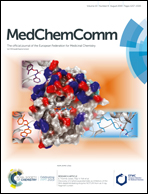Recent development of leucyl-tRNA synthetase inhibitors as antimicrobial agents
Abstract
Aminoacyl-tRNA synthetases (aaRSs) widely exist in organisms and mediate protein synthesis. Inhibiting these synthetases can lead to the termination of protein synthesis and subsequently achieve antibacterial and antiparasitic purposes. Moreover, the structures of aaRSs found in eukaryotes have considerable structural differences compared to those in prokaryotes, based on which it is possible to develop highly selective inhibitors. Leucyl-tRNA synthetase (LeuRS) with unique synthesis and editing sites is one of 20 kinds of aaRSs. Many inhibitors targeting LeuRS have been designed and synthesized, some of which have entered clinical use. For example, the benzoxaborole compound AN2690 has been approved by the FDA for the treatment of onychomycosis. AN3365 is suspended in the phase II clinical trial due to the rapid development of AN3365 resistance, but it may be used in combination with other antibiotics. The aaRSs, especially LeuRS, are being considered as targets of new potential anti-infective drugs for the treatment of not only bacterial or fungal infections but also infections by trypanosomes and malaria parasites. This review mainly describes the development of LeuRS inhibitors, focusing on their mechanisms of action, structure–activity relationships (SARs), and in vitro and in vivo activities.



 Please wait while we load your content...
Please wait while we load your content...